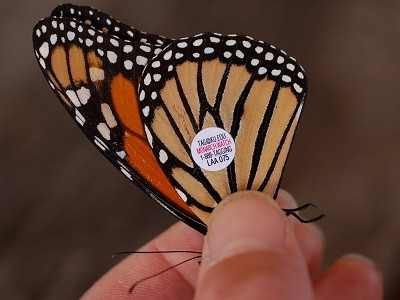
 Monarch butterflies of Western North America are facing more dire straits that previously thought, say researchers at Washington State University, who find that without measures to reverse the decline, the western monarch will be extinct within 35 years.
Monarch butterflies of Western North America are facing more dire straits that previously thought, say researchers at Washington State University, who find that without measures to reverse the decline, the western monarch will be extinct within 35 years.
The decline of monarch populations across North American has been a concern for years now, with both the eastern and western populations of the iconic species under threat. Each November, millions of monarchs in southern regions of Canada and in the United States start their arduous migration to Mexico, the multi-generational trip taking up to two months and covering between 2,000 and 5,000 kilometres.
But pesticide use and a loss of habitat (particularly of milkweed plants, the insect’s source of food in its larval stage) have been blamed for the sharp drop in numbers over recent decades.
“In the 1980s, ten million monarchs spent the winter in coastal California,” says Cheryl Schultz, zoologist with Washington State’s School of Biological Sciences and co-author of the new study, in a press release. “Today there are barely 300,000.”
Schultz and colleagues used data from citizen science monitoring of monarch populations and spatial modelling from a number of sampling sites over the past 36 years to arrive at their conclusion of rapid decline. Schultz says, “This study doesn’t just show that there are fewer monarchs now than 35 years ago. It also tells us that, if things stay the same, western monarchs probably won’t be around as we know them in another 35 years.”
The study was funded by the US Fish and Wildlife Service to help aid in its decision on whether to list the monarch butterfly as a threatened species under the US Endangered Species Act. Last year, Fish and Wildlife introduced its Monarch Conservation Implementation Plan, which seeks to promote and coordinate measures taken in support of butterfly populations, such as securing land and improving habitat availability across the United States for monarchs.
“The loss of milkweed in agricultural fields is a major cause of decline in monarchs, though there are other factors contributing to the decline in milkweed availability,” reads a statement from the FWS. “Herbicide application and increased mowing in roadside ditches and agricultural margins is eradicating milkweed habitat even more from rural areas. If managed appropriately, roadsides could provide millions of acres of habitat suitable for monarchs and other pollinators.
In Canada, the federal government has received criticism for a lack of action on the issue, most prominently from the David Suzuki Foundation which runs yearly campaigns to encourage citizens to plant more milkweed. “There’s over $20 million (in funding) in the States,” said Jode Roberts, a strategist with the David Suzuki Foundation, to CBC News. “In Canada, the response has been very slow. We haven’t had government … announcing money for conservation or research.”
Experts say that eastern monarchs suffered a rough winter this past year, with numbers dropping by as much as 27 per cent. But milder temperatures across much of North America this summer made the insect’s journey north from Mexico more hospitable. As a result, more monarchs have been spotted this summer.
Leave a Reply
You must be logged in to post a comment.




 Share
Share Tweet
Tweet Share
Share




Comment